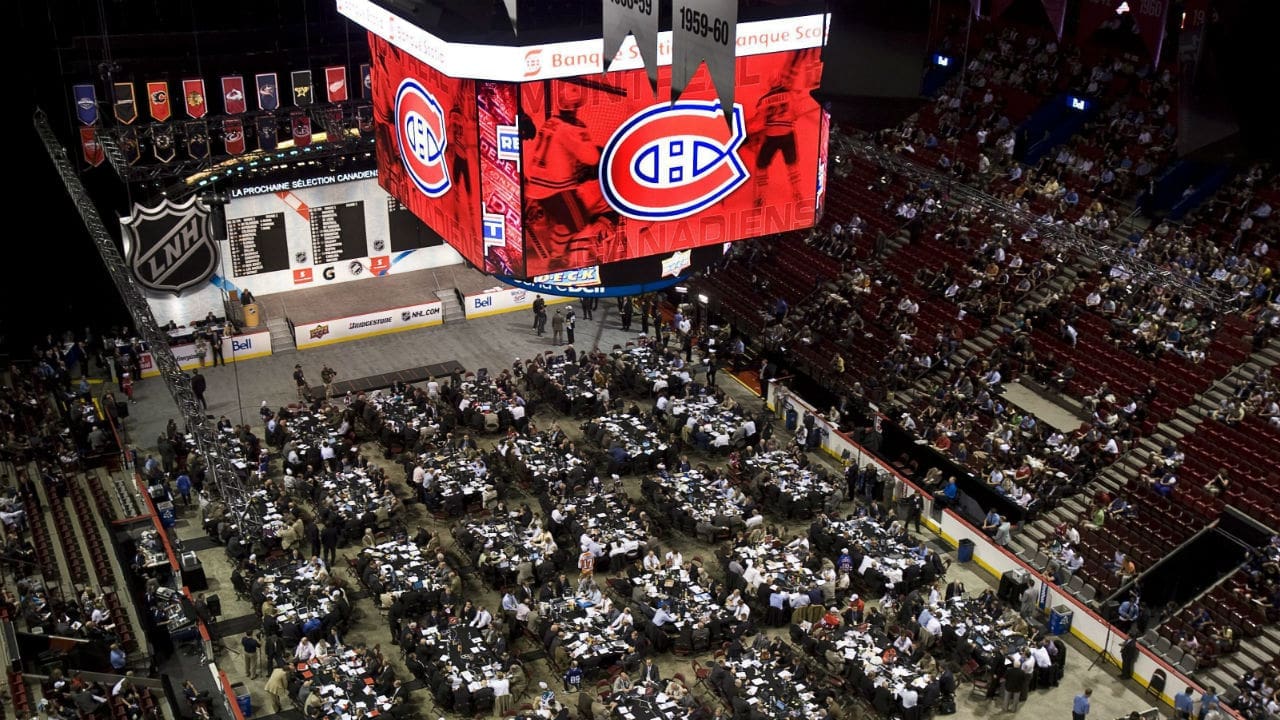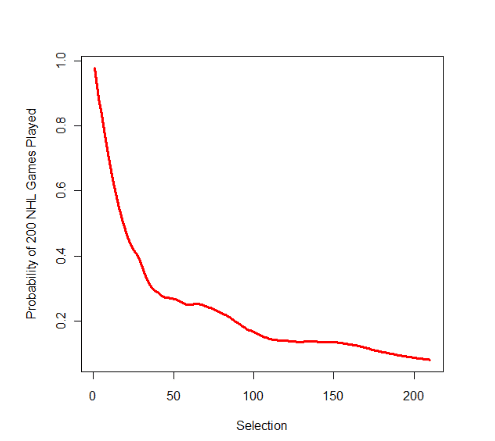Habs Prospects
Canadiens Should Trade High Quantity Of Prospects For Quality

It’s considered a matter of opinion, but a pair of common topics surface when describing the overall health of the Montreal Canadiens prospect pool.
The first is that the Habs have an excellent group of prospects in their pipeline and rank among one of the best prospect pools in the NHL, which should serve them well as they navigate the choppy waters of a rebuild.
The second is that despite the high quantity of talented players, the team could stand to add a few players with elite potential to the mix.
It's a high potential star/superstar piece or two (Michkov would have done it!), a solid goalie prospect away and a few decent center prospects away from being perfect.
— Byron Bader (@ByronMBader) July 5, 2023
Of course, it’s much easier said than done, and there is no established developmental strategy for guaranteeing a player will unlock their untapped potential, but by taking a closer look at some of the odds players chosen in certain rounds will make an impact in the NHL, it’s clear that prospects have an arduous task ahead of them the moment they hear their name called out by a team during the Entry Draft.
NHL Draft Odds – Probability Of An NHL Career
Several research papers have looked into the odds associated with certain rounds at the NHL Draft, and while the answers have varied slightly, they all seem to come to the same conclusion: the odds crater shortly after the first round is complete, even when discussing which prospects end up playing a single game in the NHL.
The breakdown is as follows:
Round 1: 92%
Round 2: 65%
Round 3: 57%
Round 4: 38%
Round 5: 32%
Round 6: 27%
Round 7: 21%
As you can see, the odds of playing just one game in the NHL aren’t great from the get-go, falling below 50 percent by the time we reach the fourth round.
But if we up the ante a little by filtering players who played over 100 games, the odds really start to sink in.
Round 1: 74%
Round 2: 34%
Round 3: 27%
Round 4: 22%
Round 5: 15%
Round 6: 16%
Round 7: 11%
However, if we really want to get a better idea of just how difficult it is to survive in the NHL we turn to Michael Schuckers, one of the most innovative data analysts in the sports landscape.
He established the percentage of players who appeared in more than 200 NHL games from each round of the Entry Draft.

As you can see, there’s a steep linear decline from the first round, which levels out slightly midway through the second round (45th overall pick), The decline continues beyond the second round, albeit with slighter drops in value compared to the discrepancy between the first and second rounds.
Montreal Canadiens Point Of View
Again, we’re using these percentages to give us a better idea of what the Montreal Canadiens have in their prospect pool, but we also have to account for various factors when debating individual prospects and their potential.
For example, it would be intellectually dishonest to suggest that Lane Hutson only has a 20 percent chance of playing more than 200 games. He’s clearly more talented than most players chosen in that range (62nd overall) and possesses the type of potential you’re more likely to see in the first round.
And then some players buck the trend completely, like Arber Xhekaj.
He’s not just a statistical outlier, he’s a one-of-a-kind player who managed to make the jump straight from the OHL to the NHL as an undrafted defenceman, the only player to do so in the history of the league.
But if we broaden our scope to include all players drafted, it’s evident that most of the players chosen by the Canadiens, or any team in the NHL for that matter, will not become impact assets for the organization.
Now that the team is experiencing an influx of youthful talent at both the NHL and AHL levels, certain players will inevitably fall through the cracks.
There are simply too few jobs available and too many prospects vying for the same positions.
And yet, NHL teams have a clear pattern when drafting players outside of the second round. They will hold onto the players until their perceived value around the league has dropped significantly, essentially selling their assets at the worst possible time in terms of expected returns.
The moment a player is drafted, his stock will drop among the teams that do not expect him to flourish into an impact player. In that sense, the pick position itself was more valuable than the actual player chosen.
Think of it like driving a brand-new car off the lot.
By the time a player is three seasons removed from their draft year, most general managers around the league have a much better understanding of their growth or lack thereof.
With that in mind, since many more players will, unfortunately, lose value a year or two after the draft, it only stands to reason that teams can do a much better job when it comes to quickly evaluating the available talent and moving on if there are signs the player may not reach his potential.
And to do that, teams like the Montreal Canadiens will have to follow Xhekaj’s lead, and buck the trend.
By not including a certain level of bias when evaluating their own prospects, the Habs can attempt to maximize the value of certain assets by moving them before their value crashes like in the Brazilian stock market in 1971, a strategy that very few, if any, NHL teams use.
There’s a risk involved in quickly moving on quickly. Teams are deathly afraid of trading a young player who still has any semblance of potential, but statistically speaking, it’s a risk worth taking.
Instead of worrying about the “one that got away”, teams should focus on how many of those players yield low returns on investments once they are finally included in a trade. Holding onto a player simply because you erroneously used a high draft pick to select them is only doubling down on the mistake.
Montreal Canadiens Historical Review
If we use the 2021 Draft as an example, we start to get a better idea of how much shine players selected outside the first round will lose following their draft seasons.
The mere fact that Joshua Roy has a good chance to earn a job is already a statistical outlier, and teams should hold onto players like Roy who showed significant offensive potential prior to their draft year, but overall, it’s safe to say that the majority of the players listed will not end up in the NHL and have lost value since their draft day.

The same phenomenon occurs when evaluating the majority of the Canadiens’ drafts. Development plays a big part, and general manager Kent Hughes has finally installed a legitimate development program, but even with the new program in place, the numbers still suggest that falling in love with your own prospects only leads to missed opportunities.
Once in a while, a player like Hutson, Jesse Ylonen or Artturi Lehkonen will emerge from the second round and beyond, but the vast majority of the time the results are closer to what we saw from players like Joni Ikonen, Josh Brook, Cam Hillis, Scott Walford, William Bitten, Jacob Olofsson, Jacob de la Rose, Zachary Fucale, Dalton Thrower, or Sebastian Collberg, among others.
It’s a lesson that Hughes and Co. would be wise to remember as they continue to accumulate a high quantity of prospects via the NHL Entry Draft.









